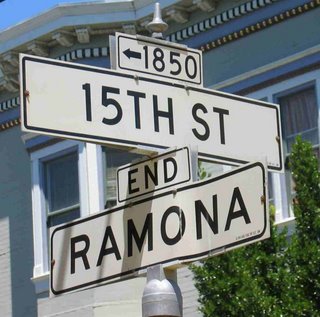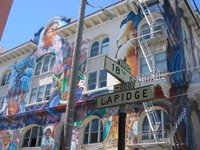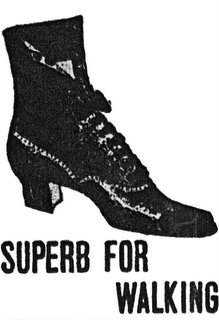
The houses along the Mission district’s Lexington Street (then called Stevenson) sprang into existence in 1876 – the work of real estate builder-developers The Real Estate Associates or
TREA. Not the mansions of Nob Hill, Pacific Heights or Upper Van Ness, not even the single-family architect-designed homes along Liberty Street (around the corner), the TREA homes on Lexington were tract houses. Here, TREA bought a whole city block (or 2) and created two streets between Valencia and Mission so they could cram in lots as small as they figured the market would bear.Slight variations on the windows and façade distinguished one house from another.

According to the 1880 census, when Lexington was still new, 27-year-old barber Valentine Meinberger lived here with his wife and infant daughter. A corner building was home to two households: 29-year-old letter carrier Austin King lived with his wife Delia in one flat, 24-year-old John Wilkins lived with his 19-year-old wife, daughter and younger brother—the two boys ran the downstairs store. Their neighbors along the street included more letter carriers, a music teacher, a post master, an engineer, a carpenter, and a dentist. Most were young families with newborns, toddlers or school-aged kids.
(If you're curious about a specific family, or address,

send me a comment and I'll see if I can track down a detail or two to delight you.)
Today, this old tract neighborhood is a delightful, tree-lined oasis from the bustle of the nearby major thoroughfares. The trees have grown up now but 125 years later, Lexington Street still provides “affordable” housing (within reason, of course—this is, after all, San Francisco!) with easy access to great restaurants along Guerrero and Valencia.
(
Map)















